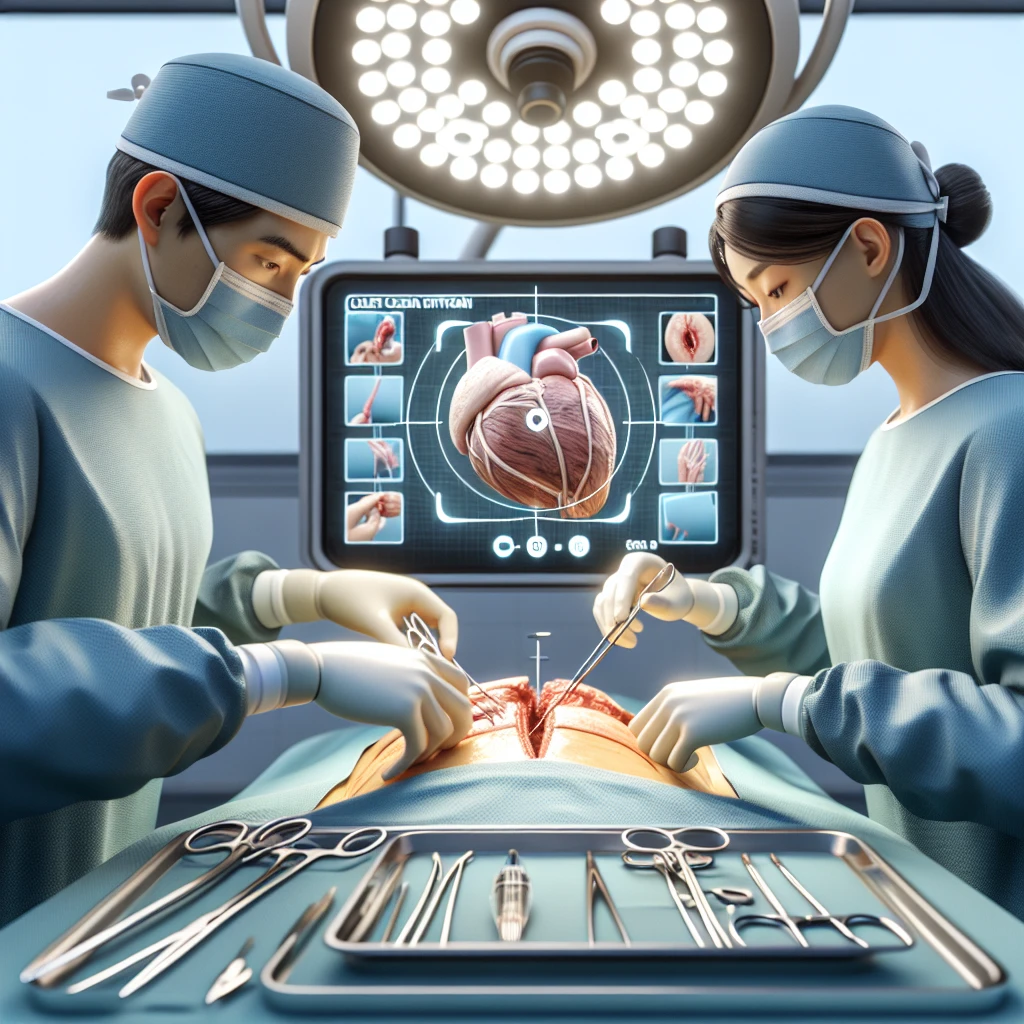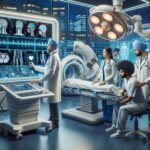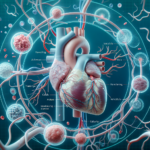
Demystifying Surgical Procedures Through Animation
Imagine stepping into a world where complex surgical procedures are made simple. A world where intricate medical concepts are transformed into clear, understandable visuals. This is the power of surgical procedures animation—a groundbreaking tool that is changing the landscape of medical education and patient care.
Article-at-a-Glance: Key Insights into Surgical Animations
- Understand the complex details of surgical procedures through 3D animations.
- Discover how animations can help patients grasp their surgical options and reduce preoperative anxiety.
- Learn about the benefits of using animations for preoperative planning and medical education.
- Explore the technical process behind creating accurate and educational surgical animations.
- Envision the future of surgical animations and their potential impact on healthcare.
As we delve into the world of surgical animations, let’s keep in mind the incredible potential they have to demystify medical procedures, educate patients, and train the next generation of surgeons.
Realistic Depictions: Bridging the Gap Between Concept and Practice
Visualizing the human body’s inner workings can be a daunting task. However, with the advent of 3D surgical animations, we can now see with clarity what was once hidden. These animations provide a bridge between theoretical knowledge and practical application, making them an invaluable tool for both experienced surgeons and medical students alike.
Now, let’s take a closer look at how these animations are revolutionizing the medical field.
Patient Education: Simplifying Complex Information
One of the most significant challenges in healthcare is ensuring that patients fully understand their medical conditions and the procedures they are about to undergo. Surgical animations come to the rescue by breaking down complex information into digestible, visual narratives that patients can easily comprehend.
By using animations, medical professionals can:
- Show patients exactly what will happen during their surgery.
- Explain the risks and benefits of the procedure in an engaging way.
- Help patients visualize the postoperative recovery process.
- Answer common questions and concerns with visual aids.
- Reduce the anxiety and fear associated with surgery.
These benefits lead to better-informed patients who are more likely to be satisfied with their care and have realistic expectations about their recovery.
Why Visualization Matters in Surgery
When it comes to surgery, a picture is worth a thousand words. Visualization is not just a learning preference; it’s a powerful tool that enhances understanding and retention of complex information. Surgical animations make the invisible visible, providing clarity that words or static images alone cannot achieve.
But why is this so crucial? Let’s find out.
Enhancing Comprehension: The Role of Visual Aids
Humans are visual creatures. Our brains process images 60,000 times faster than text, which is why visual aids are so effective in teaching and learning. In the context of surgery, animations serve as a visual aid that can simplify the most complicated procedures into a format that’s easier to digest and remember.
With animations, medical professionals can:
- Illustrate the step-by-step process of surgical techniques.
- Highlight important anatomical landmarks and structures.
- Demonstrate the correct use of surgical instruments.
- Visualize the potential complications and how to avoid them.
- Facilitate discussions with colleagues about surgical approaches.
These visual aids are not just helpful for patient education—they’re also crucial for surgical planning and team communication.
Cognitive Benefits: Understanding Procedural Steps
Remembering every detail of a surgical procedure can be challenging, especially for complex operations. Animations aid in the cognitive process by providing a clear sequence of steps that can be reviewed repeatedly until they are well understood and remembered.
This cognitive reinforcement is particularly beneficial for:
- Medical students learning new surgical techniques.
- Experienced surgeons reviewing procedures they perform less frequently.
- Surgical teams preparing for a specific patient’s surgery.
Animations not only enhance memory retention but also help in visualizing the procedure from different angles, offering a comprehensive understanding of the task at hand.
Features of Effective Surgical Animations
Not all animations are created equal. Effective surgical animations possess certain features that ensure they are accurate, educational, and engaging. These features include clarity, anatomical precision, and a narrative that aligns with the educational goals.
Detail-Oriented: Achieving Accurate Representations
Accuracy is paramount in surgical animations. Every detail, from the size and shape of anatomical structures to the color and texture of tissues, must be meticulously represented to provide a true-to-life visual experience.
For animations to be effective, they must:
- Be anatomically correct and up-to-date with current surgical standards.
- Use color and texture to enhance realism and understanding.
- Reflect the actual movements and techniques used during surgery.
These details are crucial for ensuring that the animations serve as a reliable educational resource.
Interactive Elements: Engaging the Viewer
Engagement is key to learning, and interactive elements in animations can significantly increase viewer engagement. By incorporating features such as zoom, rotate, and even virtual reality, animations become an immersive learning experience.
Interactive animations allow viewers to:
- Explore the surgical field from multiple perspectives.
- Focus on specific areas of interest for a closer look.
- 3D Modeling: A New Perspective on Anatomy
3D modeling in surgical animations is like giving viewers a pair of x-ray glasses. It allows for an in-depth look at the body’s architecture, providing perspectives that are impossible to achieve with traditional 2D images. With 3D models, every angle and layer of the anatomy can be explored, offering a comprehensive view that enhances understanding.
Effective 3D surgical animations should:
- Present a realistic representation of human anatomy.
- Allow for the isolation of specific anatomical regions for detailed study.
- Enable the simulation of dynamic processes, such as blood flow or muscle movement.
The ability to manipulate these models in a virtual space empowers both patients and medical professionals to understand the intricacies of surgical procedures with unprecedented clarity.
The Making of Surgical Procedure Animations
Creating surgical animations is an art that combines the precision of science with the creativity of storytelling. It’s a meticulous process that requires a deep understanding of both medicine and animation techniques. Let’s peel back the curtain and look at how these educational masterpieces are crafted.
Storyboarding the Surgical Narrative
Before the first frame of an animation is rendered, a storyboard is created to map out the narrative. This storyboard serves as a blueprint, outlining each key step of the procedure and ensuring that the animation will flow logically and effectively convey the intended message.
When storyboarding, animators and medical experts collaborate to:
- Identify the critical stages of the surgical procedure.
- Determine the most effective way to present each step visually.
- Ensure that the storyboard aligns with the educational objectives.
This planning stage is crucial for creating an animation that not only looks good but also teaches effectively.
Technical Artistry: From Design to Animation
Once the storyboard is approved, the real magic begins. Medical illustrators and animators work together to bring the storyboard to life. Using sophisticated software, they design accurate 3D models and animate them to create a seamless, educational narrative.
The process of animation involves:
In conclusion, surgical procedures animation is a powerful educational tool that brings clarity to the complex world of surgery. By being detail-oriented, interactive, and leveraging 3D modeling, these animations provide a new perspective on anatomy that is revolutionizing medical education and patient care. The meticulous process of storyboarding and technical artistry ensures that the final product is not only accurate but also engaging and informative. As we continue to explore the possibilities of this technology, it’s clear that surgical animations hold the key to a future where medical procedures are understood by all, not just the experts.





